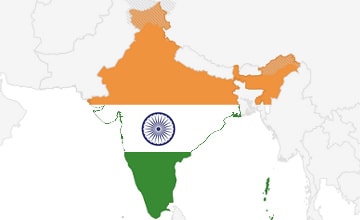The Taj Mahal
:focal(1471x1061:1472x1062)/https://public-media.si-cdn.com/filer/b6/30/b630b48b-7344-4661-9264-186b70531bdc/istock-478831658.jpg)
The mausoleum (monument at a grave) in Agra is India’s most famous monument. It is a shrine to eternal love. Built between 1632 and 1647, constructed with impeccable symmetry, by an Emperor Jahan (the Mughal Emperor Shah Jahan). The Taj Mahal was dedicated to Jahan’s favorite wife, Mumtaz Mahal, who died. The marvelous building is built to appear larger than it is. The central pool reflects the main building. The gardens are an earthly representation of paradise. The building is made from a stone that changes color with the time of the day. One of the allures of the Taj Mahal is its constantly changing hue. From dawn to dusk, the sun transforms the mausoleum. It may seem pearly gray and pale pink at sunrise, dazzling white at high noon, and an orange-bronze when the sun sets. In the evenings, the Taj can appear translucent blue. Legend or folklore says that Emperor Jahan wanted to construct a shadow image across the Yamuna River—an identical, but opposite Taj Mahal made from black marble, not white —where he would be entombed (buried). It was said that construction came to a halt after Shah Jahan was deposed (removed from power) by his son.
Indian elephants
Elephants are not only a cultural icon in India and throughout Asia, they also help to maintain the integrity of their forest and grassland habitats.
Class: Mammalia
Order: Proboscidea
Family: Elephantidae
Scientific Name: Elephas maximus indicus
Status: Endangered
The Indian Elephant is one of the recognised sub-species of the Asian Elephant. Asian Elephants differ in many ways from their African relatives – they are smaller in size with smaller ears, and the back of the Indian elephant is more rounded making the crown of the head the highest point of the body. The African species has a two-fingered tip to its trunk where the Indian Elephant has only one ‘finger’; while the tusks of the male Indian Elephant are more curved and thicker than those of the African. In fact, Asian and African Elephants differences go farther than appearances, as some genetic studies have shown that the Asian Elephant is thought to be more closely related to the extinct Woolly Mammoth than African Elephants. They live for 60 to 70 years and adults reach maturity at about 15 years old.
Elephants are ecosystem engineers, clearing large areas of vegetation, opening up habitats and creating space for new growth. They use traditional feeding routes, preferring a mixture of grassland and forest where they forage for grasses (which make up the majority of their diet), bamboo, legumes, bark, succulent climbers and palms.
India and her Peacock

For centuries, the peacock has played a pivotal role in Indian tradition. It has been loved in ancient texts and gracefully depicted in art. Indian mythology is full of legends associated with the peacock.
Another story explains how the peacock got its beautiful plumage. It seems that when Lord Indra was in battle, a peacock used his huge plume to cover him – and so Lord Indra blessed the peacock with “a thousand eyes” and his not beautiful feathers.
Mayura (Sanskrit: मयूर Mayūra) is a Sanskrit word for peacock which is one of the sacred birds of the Hindu mythology. It is referred to in a number of Hindu scriptures.
There’s a story that says that once, Lord Krishna decided to play the flue in the forest. So melodious was his music that the peacocks were enamoured and began to dance with him. All beings of the forest were completely spell bound. The peacocks danced till they grew tired. When Lord Krishna stopped dancing, the spell was broken. The peacocks were so full of happiness and gratitude that the king of peacocks went up to Lord Krishna and as gratitude, asked him to accept him feathers as they were his most prized possession. He dropped some feathers on the ground and Lord Krishna accepted his humble offering. Since then, Lord Krishna always wears a peacock feather in his hair.
In living creatures, structural coloration is the production of colour by microscopically structured surfaces fine enough to interfere with visible light, sometimes in combination with pigments. For example, peacock tail feathers are pigmented brown, but their microscopic structure makes them also reflect blue, turquoise, and green light, and they are often iridescent.

